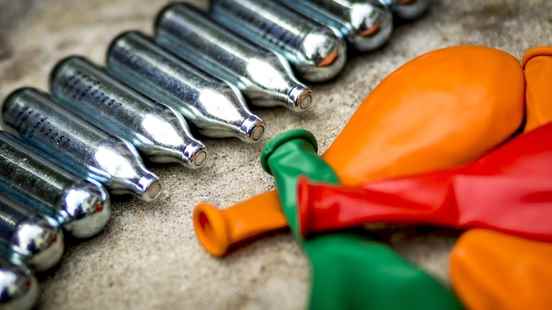A shift is taking place among nitrous oxide consumers, according to the Trimbos Institute, the knowledge institute for drugs, among other things. Although fewer people have been using laughing gas in recent years, the proportion of young people – the group that uses the most laughing gas – who use laughing gas problematically is actually increasing, says an expert from the institute. “Using a few balloons at a party now and then does not entail very great risks, although it can still go wrong, of course. But from the occasional balloon at a party, we have seen a shift towards using from the car in a parking lot. We see young people who have a big tank for themselves and use hundreds of balloons. That definitely leads to dependence.” In addition to dependence, excessive use can lead to neurological deficits, according to the expert. “Like tingling in the hands and feet. Sometimes it can turn out more serious and lead to paralysis.”
Trimbos is therefore happy with the ban, says a general spokesman. “Such a ban sends a clear signal that laughing gas is not an innocent substance. And it helps to reduce the number of new users. At the same time, we know that people continue to use despite the ban. It is therefore important to stay up to date focus on prevention. So just a ban, that’s not enough.”
What do the numbers say?
In 2021, 7.9 percent of adults will have used laughing gas at some point, according to a study by Trimbos. Of these, 1.6 percent of people used laughing gas in the past year. Exactly how many people are addicted is unknown. No new figures have been released since 2015 in connection with privacy legislation. However, research has been done into the number of health incidents involving nitrous oxide, based on data from hospitals and ambulance services, for example. In 2021 there were 141 reported nitrous oxide incidents nationwide. This is about 3.5 percent of the total of almost 4,000 drug incidents.
In recent years (2017-2021), Trimbos has seen that more and more patients end up in the emergency department. Since 2017, the contribution of nitrous oxide to the total number of reported incidents in hospitals has risen from approximately 1 to 7 percent. The increase is less significant for ambulance services and 2 percent of the reports involve laughing gas. First aid services will no longer report incidents with laughing gas in 2021, according to Trimbos, “presumably due to the ban on the sale of laughing gas in the catering industry and at events in many municipalities.”
In addition to the health incidents, the police registered about 5,000 traffic incidents in 2021, Justice Minister Dilan Yesilgöz writes to the House of Representatives.
